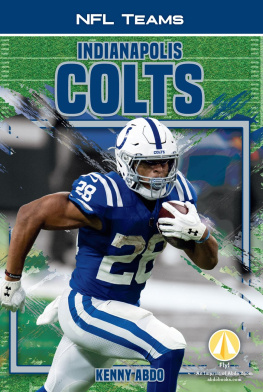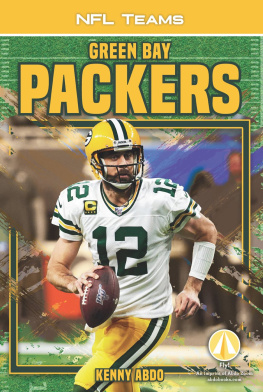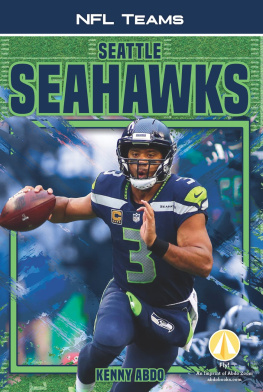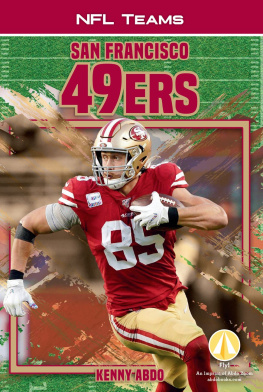abdobooks.com
Published by Abdo Publishing, a division of ABDO, PO Box 398166, Minneapolis, Minnesota 55439.
Copyright 2022 by Abdo Consulting Group, Inc. International copyrights reserved in all countries.
No part of this book may be reproduced in any form without written permission from the publisher.
Checkerboard Library is a trademark and logo of Abdo Publishing.
Printed in the United States of America, North Mankato, Minnesota
052021
092021
Design: Aruna Rangarajan, Mighty Media, Inc.
Production: Mighty Media, Inc.
Editor: Rebecca Felix
Design Elements: Shutterstock Images
Cover Photograph: AntMan3001/Flickr
Interior Photographs: aaronmjr/Flickr, p. 13; AntMan3001/Flickr, pp. 21 (top), 23; ArcadeImages/Alamy,
p. 19; Dave Monk/Flickr, p. 5; Evan-Amos/Wikimedia Commons, pp. 14, 28 (top); Everett Collection
NYC, pp. 27, 29 (bottom); Fabio Santana/Flickr, p. 9; James D Case/Flickr, p. 20 (right); joe mama/Flickr,
p. 15; John krizan/Flickr, pp. 24, 25; Manuel Garca Melgar/Flickr, pp. 11, 28; Manuel Sagra/Flickr, p. 17;
Shutterstock Images, p. 21; Sonic Retro/Flickr, pp. 7, 29; Wikimedia Commons, p. 20
Library of Congress Control Number: 2020949740
Publishers Cataloging-in-Publication Data
Names: Rusick, Jessica, author.
Title: Sonic the Hedgehog / by Jessica Rusick
Description: Minneapolis, Minnesota : Abdo Publishing, 2022 | Series: Game On! Includes online
resources and index.
Identifiers: ISBN 9781532195815 (lib. bdg.) | ISBN 9781644945490 (pbk.) | ISBN 9781098216542 (ebook)
Subjects: LCSH: Video games--Juvenile literature. | Sonic Adventure (Game)--Juvenile literature. |
Sonic the Hedgehog (Fictitious character)--Juvenile literature. | Sega Genesis video games--Juvenile
literature. | Video games and children--Juvenile literature.
Classification: DDC 794.8--dc23
NOTE TO READERS
Video games that depict shooting or other violent acts should be subject to adult discretion and
awareness that exposure to such acts may affect players perceptions of violence in the real world.
THE BLUE BLUR
A blue hedgehog in red-and-white shoes blazes down a hill,
collecting golden rings as he runs.
The hedgehog jumps to
avoid spikes and bounces on top of an enemy robot. Then,
he rolls into a tight ball as he races around a loop. Sonic is on
the move!
Segas Sonic the Hedgehog franchise is one of the best-selling
video game series of all time. It has sold more than 140 million
games! In 2020, there were more than 70 Sonic games. These
included main franchise games and spin-offs , such as racing and
puzzle games.
Fans love the Sonic series for its fun, speedy gameplay. Most
of all, fans love Sonic himself. Since his debut in the 1990s, Sonic
has remained a popular and recognizable video game character.
DESIGNING SONIC
In the 1980s and early 1990s, Japanese video game company
Sega was competing with rival Japanese game company
Nintendo.
Over the years, both companies released consoles
and games to win over gamers. This corporate battle became
known as the console wars.
In 1989, Sega released the Genesis console in the United States
to compete with the Nintendo Entertainment System (NES). The
Genesis was unsuccessful at first. Although the NES was four
years old, it still outsold the Genesis that year.
The NESs games helped make it popular. Nintendo
games featured well-known
characters, such as Mario. Sega
had characters, but none were
very popular. Sega President
Hayao Nakayama realized that to
RABBIT EARS
Another of Segas early
character concepts was a
rabbit that could grab things
with its ears. However,
the ear-grabbing motion
was too difficult for game
developers to program .
Yuji Naka ( left ) and Naoto
shima ( right ) celebrate the
twentieth anniversary of their
creation, Sonic the Hedgehog .
compete with Nintendo, the company needed a character as
recognizable as Mario.
Sega held a contest for company employees to submit new
character designs. Submissions included a dog, a hedgehog,
and an old man. Sega designer Naoto shima and developer
Yuji Naka considered these designs.
During this time, shima traveled to New York City and
showed the designs to passersby in Central Park. The United
States was a large market for video games. shimas research
allowed him to learn what Americans thought of the designs.
Between the dog, the hedgehog, and the old man, the
hedgehog was the most popular. When he returned to Japan,
shima shared his findings with Sega. He and other game
designers liked the idea of a
OLD MAN
Segas old man character
inspired the design of Sonic
the Hedgehog s villain,
Dr. Ivo Eggman Robotnik.
hedgehog curling into a ball to
roll around and deal damage to
enemies.
The original Sonic character and game
cover in a book featuring Sega creations
shima worked on the hedgehogs design. He gave it blue
fur to match the Sega company logo. At first, the hedgehogs
name was Mr. Needlemouse. But soon, the character got a new
name. Sonic the Hedgehog was born!
SONIC SUCCESS
In 1991, Sonic starred in Sonic the Hedgehog for the Genesis.
The game was a side-scrolling platformer . It had multiple
levels. The games villain, Dr. Ivo Eggman Robotnik, had taken
over an island to find items called Chaos Emeralds. As players
moved through levels, they had to gather these emeralds. They
also had to defeat Dr. Robotnik.
Like other platformers, players jumped to reach platforms,
avoid obstacles, and take out enemies. But Sonic also focused
on speed. Players sped through levels of loops and steep slopes.
These features made Sonic go even faster.
Players also gathered rings.
These allowed Sonic to absorb
damage without losing a life. Special
power-ups gave Sonic invincibility ,
superspeed, or a bubble shield.
NEW HEIGHTS
In 1993, Sonic became
the first video game
character featured as a
balloon at the Macys
Thanksgiving Day
Parade in New York City.
The Sega Genesis packaging featured an illustrated Sonic blasting
across the box. A Sonic figurine stands beside the 1991 device and
a toy TV depicting Sonic the Hedgehog gameplay.












